77 (79) Limbo
A theoretical concept in some reaches of Catholic theology. It is the place where puzzled theologians placed
those unbaptised souls which had had no chance to know and love Christ, e.g. babies and perhaps people who
lived before Christ. They are neither in Heaven nor in Hell. Charles is thinking of the heroes from ancient
mythologies who must reside here if anywhere after death.
Limbo has never been a defined article of Catholic faith. An International Theological Commission reporting to Pope Benedict XVI in October 2006 recommended its disappearance as a hypothesis from Catholic theology. The Commission stated that, while no one can be certain of the fate of unbaptised babies who die, Christians can and should trust that God will welcome them into Heaven. Presumably the same principle should apply more widely, to those born before Christ and those in our own world who hear nothing of the message of salvation; but the Commission appears not to have commented on them.
77 (79) Beatific Vision
The exquisite contemplation of the glory of God in Heaven.
78 (79) Inigo Jones’s time
Inigo Jones was an English architect and designer (1573-1652) who introduced to Britain the classical
architecture of the late Italian Renaissance, in Britain called ‘Palladianism’. He was also responsible for
the creation of the elaborate court masques of the Jacobean period.
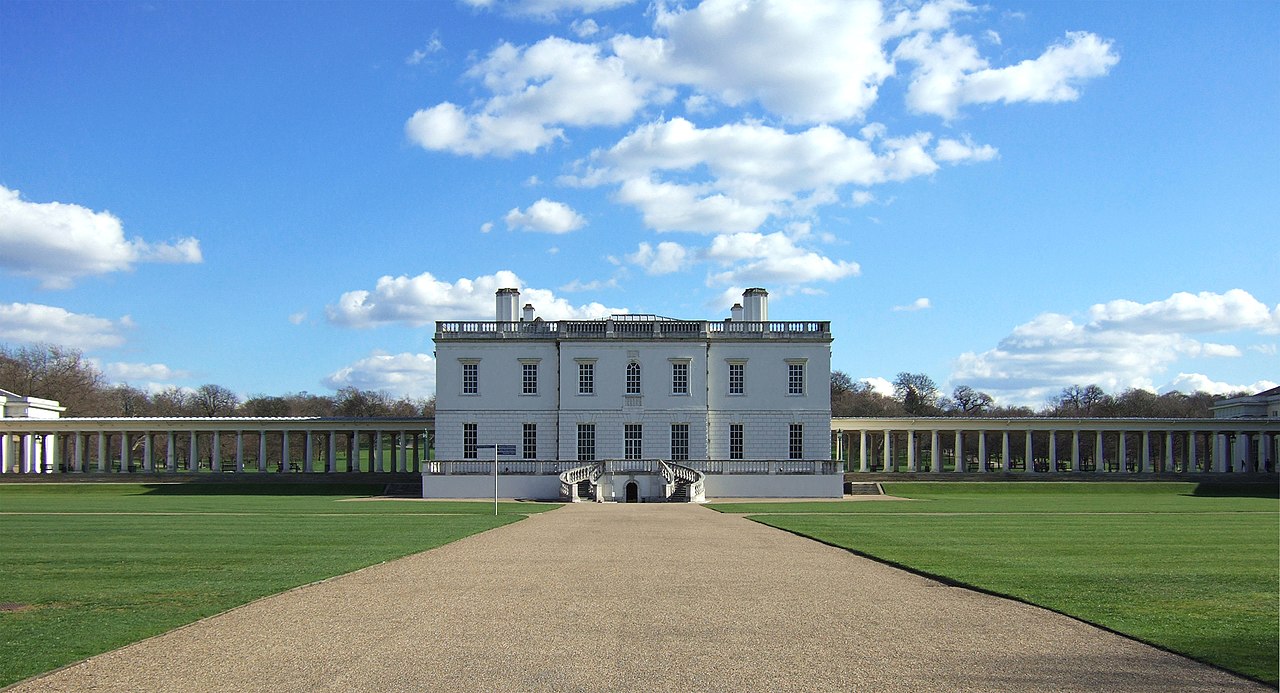
77 (80) box-edged
It was, and is, common in larger English gardens to edge walks and garden beds with very low hedges of
plants like box, a dense evergreen shrub with dark green leaves. There is a description of the use of box a
few paragraphs on.
77 (80) alpine strawberries
A variety of wild strawberry (Fragaria vesca) that can in fact be easily grown in English gardens.
Though smaller than modern cultivated strawberries, they have a succulent flavour. They fruit all the
growing season, and can come in white and yellow shades as well as red.
77 (80) succession of hot-houses
On larger estates one commonly comes across a number of hot-houses (General Tilney in Jane Austen’s Northanger Abbey calls
them ‘succession-houses’). They have different, strictly controlled temperatures to allow for the transfer
of plants (generally fruit and flowers) from one to another to give them a congenial environment for their
present stage of growth, or to gradually prepare them for life in the open air. Some of the plants, of
course, remained in a particular hot-house all the time because that climate was always suitable.

78 (80) Soanesque
Sir John Soane (1753-1837), English architect, was the last major British exponent of the Neo-Classical or
Palladian style before the age of Victoria. His style was very popular and has now come back into favour. He
was the architect of the Bank of England.
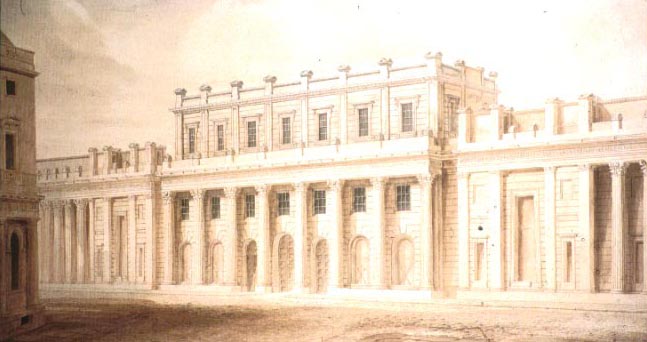
78 (80) pagodas ... mandarins
A pagoda is a Buddhist temple with a series of successively smaller projecting roofs for each storey. In
Britain it was thought of as characteristically Chinese. Rooms in Chinese style were very popular in 18th
century English decor, and became part of a fashion called chinoiserie. The pagodas were probably part of
the design of the wallpaper, luxury rolls of which were bought from China itself as early as the 17th
century. Certainly the wallpaper would have Chinese landscape, figures and motifs. Nodding mandarins were
quite popular figures in the eighteenth century and were manufactured into the twentieth : they had
articulated heads and hands, and often tongues!
The Chinese Drawing Room is where Lord Marchmain will die towards the end of the novel. He describes a mandarin figure in his long speech just before his death (page 316).
78 (80) Chippendale
Thomas Chippendale (1718-1779), an English furniture designer and cabinet-maker. He was the designer who
most popularised chinoiserie in Britain. In 1754 Chippendale published The Gentleman and
Cabinet Maker’s Director, a book of engraved designs which in Britain acted as the general
pattern-book for the age.
78 (80) balustrade
A railing, usually decorative.
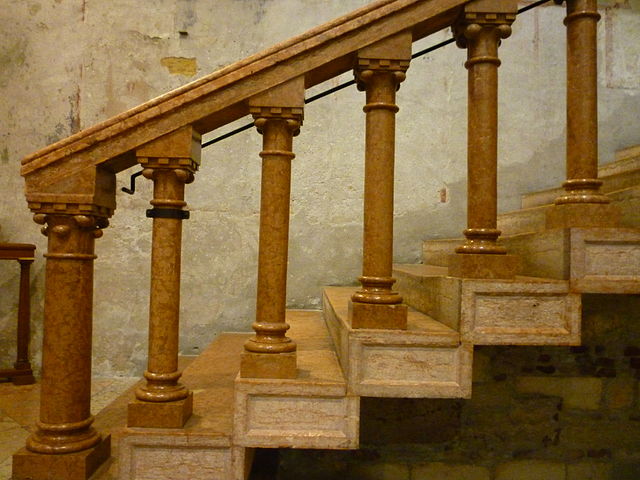
78 (80) colonnade
An open passageway with columns.
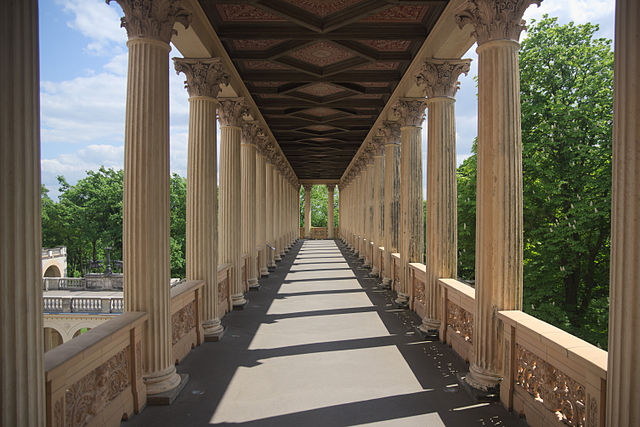
78 (81) arabesques
An intricate design with many elements, especially curves.

78 (81) fountain ... piazza
Italy had many classical and rococo fountains in public squares. In England at the same period it was not
the custom to build fountains (as opposed to drinking troughs). In the 18th century, English connoisseurs
liked to buy Italian fountains and erect them at home as a centrepiece of their formal gardens. We learn
later that Brideshead’s fountain was transported from Naples ‘in the days of Nelson’.
79 (81) camelopards
Early name for giraffes. Their representation in the Baroque period was approximate.
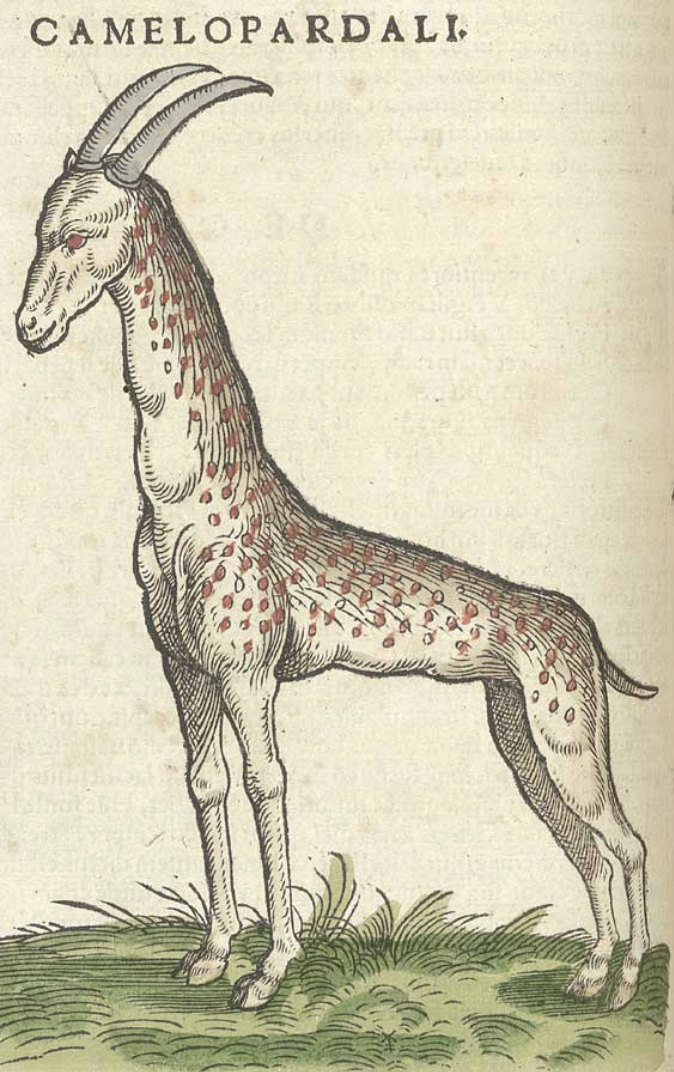
79 (81) pediment
A pediment is the broad triangular face of a building on top of a colonnade. It might be decorated.
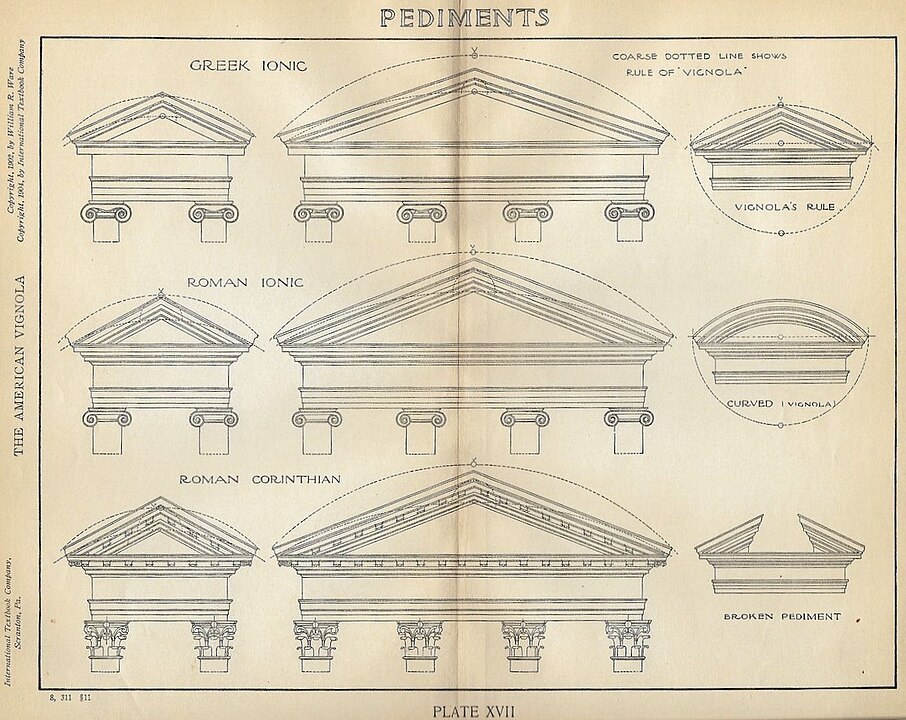
79 (81) Piranesi
Giovanni Battista Piranesi (1720-1778), Italian architect and engraver, famous for his views of Rome. They
have a heavy, wild, romantic feel to them.
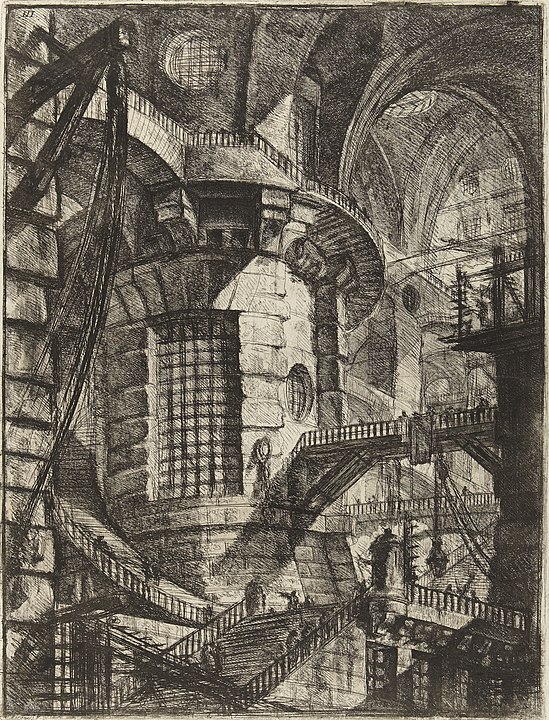
79 (81) rubbing brasses
A favourite occupation of artistic schoolboys in England at this time. Many English churches have engraved
brass tablets on floors and walls which celebrate dead worthies, some of them with splendid images. With a
stick of coloured wax (usually black) and a large sheet of suitable paper, one can produce a copy of the
image.
79 (82) Ruskin
John Ruskin (1819-1900), English critic, artist and writer with a splendid style, who had a large influence
upon public taste in art in Victorian England. Ruskin took a strict view of high art, judging its value by
estimating its faithfulness to nature and its avoidance of self-indulgence in sensuality. He was therefore
the man who created the standard Victorian responses to art and linked art with utility and morality in the
public’s mind, though he himself deplored such simple equations.
EW may have had in mind the celebrated court case when James Abbott McNeill Whistler (1834-1903) sued for damages after Ruskin accused him in an article of being ‘a coxcomb flinging a pot of paint in the public’s face’. Ruskin was referring to Whistler’s painting Nocturne in Black and Gold : The Falling Rocket, today an acknowledged masterpiece. Whistler received token damages of one farthing (a quarter of a penny) after Ruskin was too ill to appear in court to defend his accusation. EW was actually fully in sympathy with Ruskin, as he made clear in a 1956 article..
[Ed. Note: The article Cliffe references at the end of this annotation is The Death of Painting—linked above—which was published in The Saturday Book: No. 16, ed. John Hatfield (London, 1956), pp. 49-53. It can be found reprinted in both The Essays, Articles, and Reviews of Evelyn Waugh, edited by Donat Gallagher (1984, pp. 503-507), and A Little Order: A Selection from his Journalism, also edited by Gallagher (1980, pp. 70-74).Here is the relevant passage:
In 1877 Ruskin denounced Whistler's pretentious Nocturne in Black and Gold with the felicitous expression: 'a coxcomb flinging a pot of paint in the public's face.' The prospect of enlarging this opinion in court was 'nuts and nectar' to him 'The whole thing,' he wrote of [Edward] Burne-Jones, 'will enable me to assert some principles of art economy which I've tried to get into the public's head, but writing, but may get sent over all the world vividly in a newspaper report or two.' Alas, that great projected trial came to nothing. Ruskin was too ill to appear. Whistler was given contemptous damages without costs; Ruskin's costs were paid by public subscription. But it was not the hoped-for triumph of high principle. The pert American scored somer verbal points and gentle Burne-Jones reluctantly gave evidence that Whistler's work lacked 'finish'. This clearly was not the point at issue with the early and life -long adulator of Turner. What a tremendous occasion had Ruskin at the height of his authority and eloquence stood up to warn the world of the danger he acutely foresaw! Something as salutary as Sir Winston Churchill's utterance at Fulton, USA, and perhaps more efficacious. By a curious abberation of popular history the trial was for more than a generation represented as a triumph of Whistler against the Phillistines. Today, it is reported, there is an honoured American painter who literally does 'fling' pots of pain at his canvas. What would Whistler have to say about that? Ruskin, we may be sure, would be serenely confident in his early judgment.]
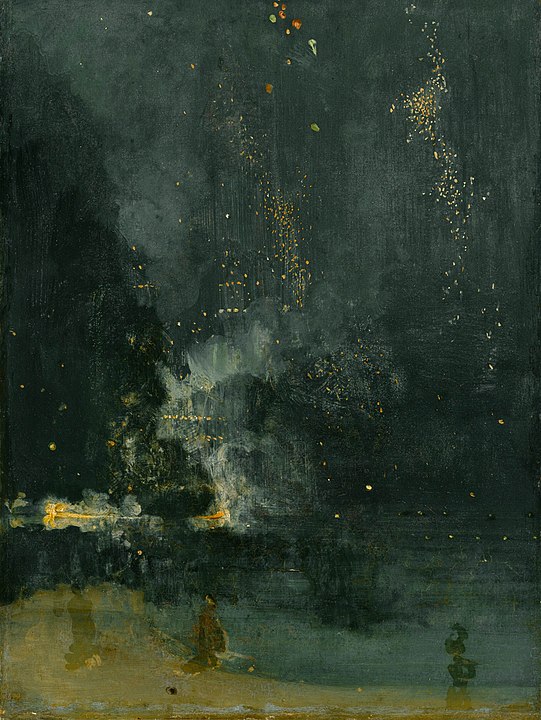
79 (82) Baroque
In the 1920’s and for many years after, a very much derided style and period. The word implies contortion,
which is how the critics of the style thought of it in its own time (16th-18th centuries). It appeals
directly to the senses, often very dramatically and even excessively. The English Baroque (perhaps from
around 1660 to 1750) was on the other hand a very much more formalised and classical style than Continental
Baroque - think of Saint Paul’s Cathedral and Castle Howard.
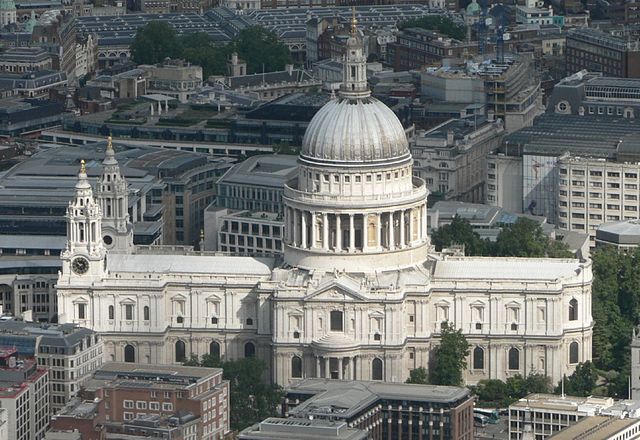
79 coffered [Only in Br. Ed.]
This was a characteristic of some eighteenth century and earlier architecture. A ceiling was coffered when
it had sunken panels, usually rectangular and regular.
82 tricky [Only in Am. Ed.]
From the British editions of the novel we know that EW wrote coffered.
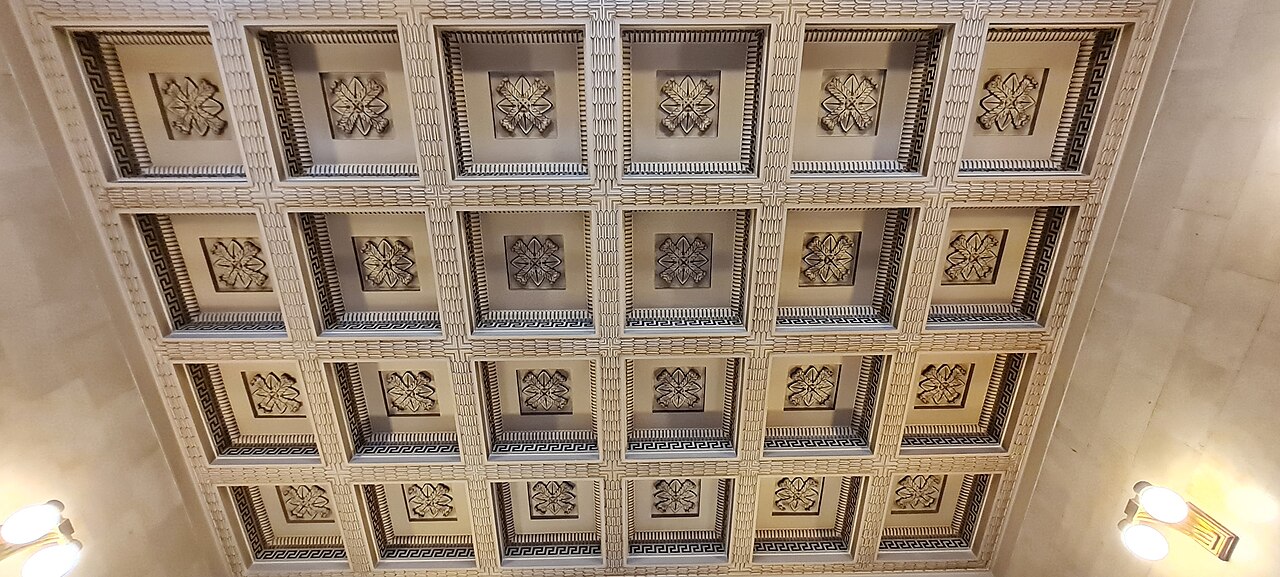
79 (82) broken pediments
These pediments are not damaged; their design means that they are not fully triangular, because a
symmetrical segment has been deliberately left out of the angle which points up towards the sky. In other
forms of broken pediment, the base line might be interrupted.
80 (82) japanned
Covered with a lacquer that gives a shiny black finish.

80 (82) dead aloes
Aloes is a succulent plant with many varieties originally from Africa and Asia but successfully introduced
into the Mediterranean region in pre-Christian times. It can be grown in favourable micro-climates in
southern Britain but is susceptible to frost. A neglected plant, as this appears to be, would not easily
survive.
80 (82) Rococo
A style of intricate, pretty and often excessive ornamentation which was the final development of the
baroque spirit in 18th century Europe.
80 (82) groined
A groin is the curved edge between vaulted sections. So we know that this room is vaulted.
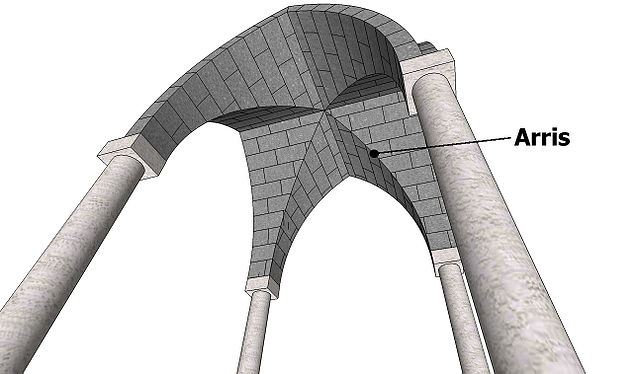
80 (83) fête champêtre with a ribboned swing
A fête champêtre is a painting in which the artist depicts a group of people enjoying themselves in
the countryside. French painters of the 18th century like Fragonard, Watteau and Lancret were adept in the
genre. Indeed a lady on a swing is the centrepiece of one of Fragonard’s most celebrated paintings, The
Swing (1766), which Sebastian is no doubt thinking of. He appears to want an imitation. No wonder
Charles is unable to fulfil the request.

80 (83) a Negro page
In both France and Britain black servants were a distinguished addition to a household in the 18th century.
What appears to 21st century minds to be insufferable condescension actually meant that many black men and
women led lives of considerable quality and esteem.
80 (83) pastiche
An imitation of the style of another artist or age, here of French 18th century painting.
81 (83) transept
Though usually employed in the description of church architecture, the term here suggests a side-room off
the main cellar.
81 (83) vintages fifty years old
This figure indicates that the oldest wines date from before 1873. They are almost certainly wines made
before the phylloxera outbreak changed vine-growing in Europe for ever.
Phylloxera is an American vine root louse that was accidentally transported to England in 1863. From there it spread to the continent with considerable speed and within twenty years had infected almost all of Europe. The French were particularly slow to take counter-action, the only reasonably successful measure being to use resistant root-stock from America, a policy which horrified French viticulturists with their entrenched ideas of vinous purity. Connoisseurs undoubtedly agreed that wines made in pre-phylloxera days were superior to later ones. Even today there are occasional wine tastings when wines now 120 or more years old are tested against later vintages and found to be superb.
81 (83) the eighteens and the twenties
i.e. wines made in 1918 and 1920. These, especially the 1918, were good vintages and could be expected to
mature for many years. Wilcox obviously still keeps his ear to the ground.
81 (83) my stay in many barren years
This is an intriguing reference to years about which we know little. This phrase is a hint that Charles
relied on wine to console himself in times of unhappiness or frustration. Possibly these times were the
period when he was unhappily married to Celia, and later the years after his departure from Brideshead.
Unlike Sebastian, Charles is able to use alcohol to add quality to his life - a distinction that Cara
quickly notices.
81 (83) a book on wine-tasting
The instructions of this guide are frequently recommended today.
81 (83) Bath Oliver biscuits
A biscuit which does little to satisfy hunger but is suitable for wine tasting because of its neutral taste.
(Actually, I think they are delicious.) They are still commercially available today, made according to a
secret recipe. Dr William Oliver of Bath is said to have invented them in the mid-eighteenth century as an
alternative to another of his inventions, the Bath Bun, which was so delicious his patients tended to gain
rather than lose weight while on their health cures.
82 (85) county cricket
Perhaps the one flaw in the perfection of characterisation of the two boys is their indifference to cricket.
This is not the place to expand on the joys of a game which will be uncongenial to people who expect their
sports to consist of continual adrenal bursts. It must in honesty be admitted that not even all Englishmen
appreciate cricket’s exquisitely extended excitements. The senior game in England is organised into a league
(from 2000, two leagues) based on teams from counties.
8 (85) Tennyson [The second paragraph is only in the Br. Ed.]
One’s mind boggles. This is not the great poet who is gracing the cricket field, however; he died in 1892.
This is his grandson, the Honourable Lionel Tennyson (1889-1951), later third Baron Tennyson, who was famous
for his hard hitting. In a low period for English cricket, he was considered inspiring enough to captain
England against Australia in 1921; he played in a total of nine test matches. His career was unfortunately
interrupted by World War I, in which he was twice wounded. 58 is a good but not a great score for an
individual in a cricket match.
My favourite story about Tennyson (who, unlike his grandfather, was basically illiterate) is his comment when a Hampshire colleague tried unsuccessfully to hoick a straight ball over the leg boundary. Bloody fool, he said, bowled by a ball he should have left alone. Cricket aficionados will appreciate that one.
82 (85) induction
Formal installation into an office.
82 (85) Ampleforth
The great Benedictine Abbey and School in Yorkshire. Its abbots have been eminent men; the late Cardinal
Hume was abbot before he became Archbishop of Westminster.
82 (85) against Lancashire
One of the first class counties in the Cricket Championship. Father Phipps is obviously talking about a
match played by Yorkshire against Lancashire, always a bitterly fought contest. Tennyson played for
Hampshire.
83 (85) not an old-established centre of Catholicism
Since EW could easily have made the Flyte family into old Catholics (see note to page 89), this choice is
interesting though its significance is difficult to judge. EW was himself a convert to Catholicism; this
fact may lie behind his perception of the existence of ‘a twitch upon the thread’.
83 (85) little grey church at the gates
This is the parish church of the majority faith of the area, the Church of England. It seems to be an
ancient foundation as the Flyte family had its tombs there; it may predate Brideshead itself by several
centuries.
83 Sebastian’s faith was an enigma to me [Only in Br. Ed.]
See my comments in the Preface.
85-86 Sebastian’s faith ... much interested [Only in Am. Ed.]
This paragraph was almost entirely rewritten for the revised edition of 1960. The replacement passage
emphasises indifference and mild scepticism towards Christianity rather than outright hostility. It contains
two sentences that accurately describe EW’s own experience as a schoolboy at Lancing College. Many might
consider the new passage more suitable for fleshing out the agnostic that Charles maintains he is during his
first summer at Brideshead :
I had no religion. I was taken to church weekly as a child, and at school attended chapel daily, but, as though in compensation, from the time I went to my public school I was excused church in the holidays. The masters who taught me Divinity told me that biblical texts were highly untrustworthy. They never suggested I should try to pray. My father did not go to church except on family occasions and then with derision. My mother, I think, was devout. It once seemed odd to me that she should have thought it her duty to leave my father and me and go off with an ambulance, to Serbia, to die of exhaustion in the snow in Bosnia. But later I recognised some such spirit in myself. Later, too, I have come to accept claims which then, in 1923, I never troubled to examine, and to accept the supernatural as the real. I was aware of no such needs that summer at Brideshead.
It is easy to see why EW thought the second version more suitable – it gives a background of home and school of greater naturalness, it tells us more about that intriguing but unknown character Mrs Ryder, it reveals a self-sacrificial nature in Charles.
86 ‘complexes’ … ‘inhibitions’ [Only in Am. Ed.]
The speech marks indicate EW’s distrust of the terms and of psychoanalysis in general.
83 Divinity [Only in Br. Ed.]
The name given to the subject of Religious Education in some schools and most universities.
83 to die of exhaustion in the snow [Only in Br. Ed.]
For pedants, there is some interest in the manner of Mrs Ryder’s death. Here she dies of exhaustion; in Charles Ryder's Schooldays, written in 1946, she is killed by a German
shell. It is not clear why the shell should be German; it was the Austrians who were fighting the Serbs in
Bosnia, though it appears that many of their munitions were sourced from Germany. Perhaps this was a garbled
and romanticised version that Charles as a schoolboy allowed to lodge in his mind, and the account in BR is
the accurate one.
Equally, we could just ignore Charles Ryder’s Schooldays. There is no evidence that EW wanted to publish it at all. He may even have forgotten it by the time he came to recast this paragraph in his revision of BR in the late 1950’s.
84 (86) I’m very, very much wickeder
Perhaps surprisingly, Sebastian’s self-condemnation can easily be justified from the text if one has a
strict view of sin.
84 (86) Who was it used to pray, “O God, make me good, but not yet”?
Probably Sebastian has misremembered ‘Da mihi castitatem et continentiam, sed noli modo’ - ‘Give me
chastity and continence - but not yet’, which appears in the Confessions of Saint Augustine of Hippo (354-430).
84 (86) News of the World
A Sunday newspaper whose chief attraction then (and for many years after) was the account of court cases of
a lubricous character which were reported coyly in terms which encouraged, but left much to, the
imagination. The paper still exists and is popular, but many would now class its content as openly
pornographic.
84 (86) naughty scoutmaster
Undoubtedly a reference to a court case involving pederasty.
84 (87) change the weather
EW himself seems to have believed that this was possible. He used to ask a commmunity of Poor Clare nuns to
pray for specific purposes and, according to members of his family, the holy ladies were always successful.
On one occasion he asked them to pray for fine weather for a fete being held in his grounds on behalf of the
local parish and the sun shone for the two hours of the fete though there was rain for the rest of the day.
84 (87) St Anthony of Padua
A very popular saint (1195-1231) to pray to if you want to find something you’ve mislaid.
84 (87) Canterbury Gate
One of the entrances into Christ Church College, built 1772-1788. It leads into Canterbury Quad.
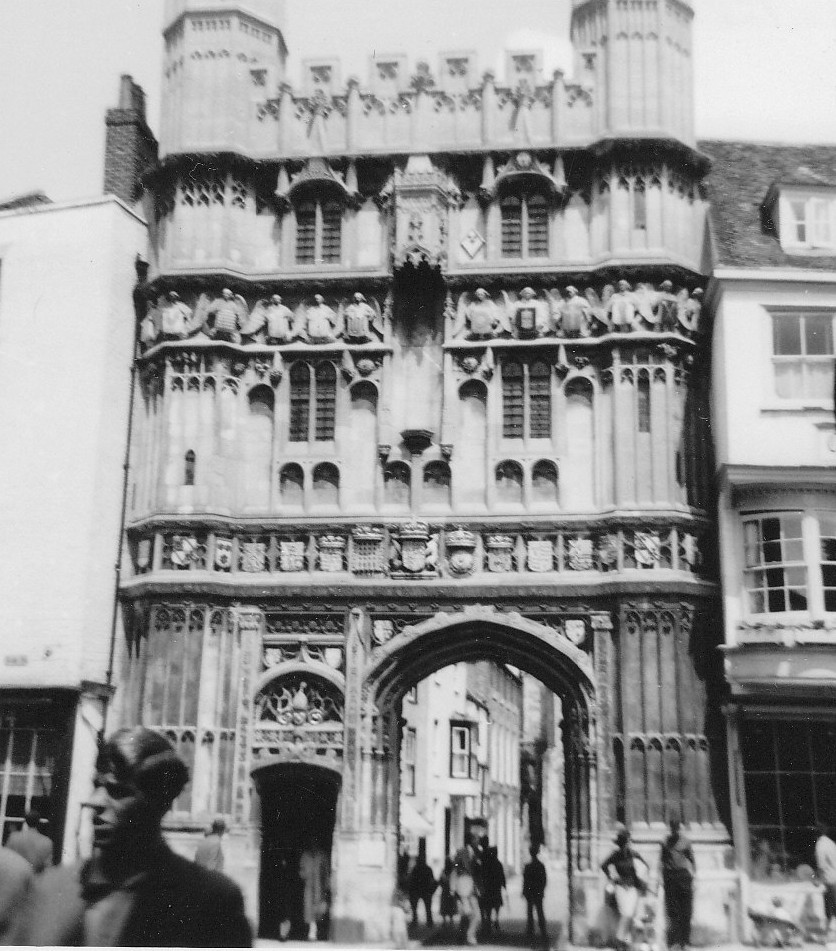
85 (87) using an instrument
A cant phrase in the newspaper for the tools of the trade of abortion, then an illegal vocation.
86 (88) Stonyhurst
Prominent Jesuit school in Lancashire.
86 (88) the Guards
The most prestigious regiments in the Army, charged with guarding the monarch. A man with a title should at
that time have had little trouble in securing a commission in a regiment of the Guards.
86 (88) House of Commons
As the son of a peer Brideshead is eligible to stand for Parliament and take his seat in the House of
Commons if elected. His father could not do so because he already has his own seat in the House of Lords.
87 (89) excommunicated
Lord Marchmain has not been publicly denounced by the Pope or his bishop, as some think; he has merely been
excluded by his own actions from receiving communion in church. He can put things right by an act of sorrow
and amendment, which is what he does do at the end of his life.
87 (89) at least four cliques
It is interesting to speculate of whom Sebastian is thinking. An idle line of thought suggests that one
clique could be the English of recusant origin, a second those who descend from Irish immigrants; a third
could be the ultramontanes, i.e. those who were more papal than the Pope (very strong in the 1920’s), and a
fourth those who adopt a liberal or ‘modern’ attitude.
87 (90) Francis Xavier
Cordelia’s pig is named after Saint Francis Xavier (1506-1552), missioner to India, Japan and (when he died)
prospectively to China. He was one of the great missionaries of the modern age and seems to have achieved
his successes by charisma rather than catechesis.
87 (90) special mention
This is only a consolation prize in the world of agricultural shows.
88 (91) Magdalen
An old, distinguished college at Oxford. The name is pronounced like maudlin.
88 (91) Enfant de Marie
Known more commonly in England as the Children of Mary, this organisation exists to help children and young
adults sanctify their lives with acts of devotion and minor self-sacrifice.
89 (91) obedience
Brideshead is pointing out to Cordelia that her fault was not one of pettifogging rule breaking but of
defiance - far more serious.
89 (91) atheist … agnostic
The difference is that an atheist positively asserts that there is no God whereas an agnostic just does not
know if there is one. It is not clear that Charles has thought seriously about the matter at all.
89 (92) Bishop in London
Not ‘Bishop of London’. That particular bishop is a senior prelate in the Church of England. This one, who
must be Catholic, merely met Bridey in London. He is certainly the Bishop of Clifton, who had authority in
Wiltshire; his name was George Ambrose Burton.
89 (92) Blessed Sacrament
As explained earlier, this is the body of Christ under the appearance of bread. It is placed in the
tabernacle on the altar or reserved in a side chapel. Since Brideshead Chapel is (at this time and again
during the war) used for Catholic services, the Sacrament is always present.
89 (92) old Catholics
Catholic families who maintained the faith through penal times, when one could be punished for doing so.
Landowners whose families had remained Catholic since the sixteenth century frequently had a large band of
loyal estate workers and neighbours who also maintained the old religion in the district. This was not the
case here. The Flytes were not old Catholics. It was the Marchioness of Marchmain, Sebastian’s mother, who
brought Catholicism to the family with her marriage - she is however a member of an old Catholic family.
89 (92) Probably in eighty years it will be greatly admired
Indeed it is : art nouveau is now very much sought after.
90 (92) But is there a difference between liking a thing and thinking it good?
It is remarkable that Bridey has passed through Stonyhurst and Oxford and apparently not debated this basic
question. EW thus brings his narrowness to our attention (as well as, soon, Sebastian’s impatience with
intellectual discussion). I suppose it is possible that Bridey is merely keeping the conversation going.
90 (93) Jesuitical
i.e. thinking and acting like a Jesuit, a member of the Society of Jesus, a Catholic order of missionaries
and educators famous for their educational expertise, social influence and subtlety of reasoning. Since to
argue with them was to lead one into thickets of logic, ethics and religion where very few were skilled,
jesuitical came to mean adept in entanglement and ambiguity, especially in Protestant
countries.
90 (93) a whole rosary … Just a decade
A rosary is generally understood to mean a system of prayers based on a chaplet. This has 55 beads (though
the 55th may be a medallion link), with, usually, five further beads joining the link to a crucifix. The
chaplet’s main beads are divided into five sections known as decades.
In using the phrase whole rosary, Cordelia certainly means a complete traverse of the chaplet, then and today commonly called the rosary (though you can still buy a complete 15-decade rosary with 165+5 beads and a crucifix - one sometimes saw them around the waists of nuns).
During one circuit you meditate upon one of three sets of mysteries associated with the lives of Jesus and Mary. These three sets are :
| The Joyful Mysteries | The Sorrowful Mysteries | The Glorious Mysteries | |
|---|---|---|---|
| 1 | The Angel Gabriel’s Announcement to Mary | The Agony in the Garden | The Resurrection of Jesus |
| 2 | Mary’s Visit to Saint Elizabeth | The Scourging of Jesus | The Ascension of Jesus into Heaven |
| 3 | The Birth of Jesus Christ | The Crowning with Thorns | The Coming of the Holy Spirit |
| 4 | The Presentation of Jesus at the Temple | Jesus Carrying the Cross | The Assumption of Mary into Heaven |
| 5 | The Finding of Jesus at the Temple | The Crucifixion and Death of Jesus | The Coronation of Mary in Heaven |
For each of these mysteries you say a Pater Noster (Our Father), ten Aves (Hail Mary) and one Gloria Patri (Glory be to the Father). Since one bead is used both to end one decade and to begin the next, eleven beads are devoted to each decade. That is why there are 55 main beads in the loop of the rosary. There are also introductory and concluding prayers which may vary according to the season or the part of the world.
In 2002 Pope John Paul II added a fourth set of mysteries to the rosary, introducing the first radical change for several hundred years. These new mysteries fill the gap between the childhood and passion of Jesus and deal with his ministry. They are called the Luminous Mysteries (or Mysteries of Light) and consist of : the Baptism of the Lord in the Jordan; the Wedding at Cana; the Proclamation of the Kingdom of God and the Call to Conversion; the Transfiguration of Our Lord; and the Institution of the Eucharist (Holy Communion). I have not yet seen a twenty-decade rosary chaplet to cover all four sets of mysteries!
The fact that a devout child like Cordelia can allow only a decade a week to each of her intentions is testimony to her wide-ranging sympathies. One certainly expects her to get round a whole chaplet at least once a day (five decades and so five intentions) - after all she would do it once in the chapel in the evening (see page 125) - and probably three times a day (fifteen intentions) to make the complete rosary. If the latter, a week’s worth would be over a hundred intentions. A decade takes perhaps three or four minutes to say if one does not gabble too much and truly meditates on the meaning of each mystery, though it must be admitted that many Catholics do rush through it.
91 (94) Lloyd George
David Lloyd George (1863-1945) was Prime Minister of Great Britain from 1916 to 1922, and so was in office
when World War I was won. The Conservatives in the Government coalition got rid him in 1922 as rumours of
his bribery and moral excesses began to take hold in the country and restiveness at his prolonged ministry
and unpopular policies increased.
91 (94) the Kaiser
Wilhelm (William) II (1859-1941), Emperor of Germany and King of Prussia from 1888 to 1918, was the main
loser in World War I. He lost his throne and had to live in exile in the Netherlands for the rest of his
life.
91 (94) to buy a black god-daughter
Patronising as it may appear now, this action represents the first stirrings of practical charity among lay
Catholics in Britain towards the developing countries of the world.
91 (94) five bob
i.e. five shillings, a quarter of £1 (=25p today). The derivation of the term ‘bob’ is obscure.
91 (94) You take art as a means not as an end.
Bridey is returning to their discussion on the difference between liking a thing and thinking it good. He is
pointing out that Charles’s words betray a proper distinction between objective and subjective judgements.
Charles can distinguish between his own reactions to an art object and a more universal evaluation of it.
Bridey would have expected Charles to judge the chapel bad because he disliked it.
Bridey makes the theological link because he himself has been taught at Stonyhurst to make a clear distinction between the status of an object (which may be good and therefore desirable) and the status of the means by which one pursues that object (which may be good or bad).
91 (94) novena
A scheme of prayers offered on nine days in succession in order to petition for a particular purpose.
91 (94) causing scandal
A consequence always to be avoided. Scandal in ecclesiastical terms is a word or action that
occasions or seeks another’s spiritual ruin, and is therefore in itself evil. Here Bridey fears that the
light way in which the family appears to be talking of their religion might act as a barrier to Charles’s
understanding or acceptance of it.
91 (95) travel third
Rail travel in Britain in 1923 was divided into two classes - first and third. Second class travel had
disappeared in the early years of the century, mainly because public and parliamentary demand required that
the standards of the third class should be improved until they were indistinguishable from second class.
(Originally third-class passengers had sat on planks of wood in carriages open to the weather.) In 1956
third class was renamed second class.
92 (95) Lotti
An hotel in the Rue de Castiglione in Paris.
92 (95) Foyot’s
One of the superb restaurants which were common in Paris. It was located just across from the Senate
building, so senators and businessmen patronised it. On occasion it was a centre for student activity, often
revolutionary. The restaurant was later destroyed in order to enlarge the street.
92 (95) Gare de Lyon
The railway terminus in Paris for trains going to the Riviera and the south. The famous Blue Train departed
from here at that time, but now, I understand, departs from the Gare Austerlitz. Nevertheless the Blue Train
restaurant is still worth visiting at the Gare de Lyon.
92 (95) Orvieto [In the Am. Ed: flash of Orvieto]
A light white Italian wine. Flash should be flask, of course.
92 (95) valet
Pronounced at that time (and also today if you want to be correct) with the ‘t.’
92 (95) gondola
Lord Marchmain has his own boat and gondoliers, as their livery shows.
92 (95) vaporetto
A type of water-bus designed for the canals of Venice. (Nevertheless vaporetti cause considerable damage to
the Venetian environment.)
93 (96) ‘Palazzo. Pronto.’ ‘Si, signore Plender.’
‘The palace, quickly.’ ‘Yes, Mr Plender.’
93 (96) ‘Ecco ci siamo, signori.’
‘Here we are, gentlemen.’
93 (96) Palladian
A classical style of architecture developed by the Italian architect Andrea Palladio (1508-1580) in an
earlier form than the English baroque on display at Brideshead.
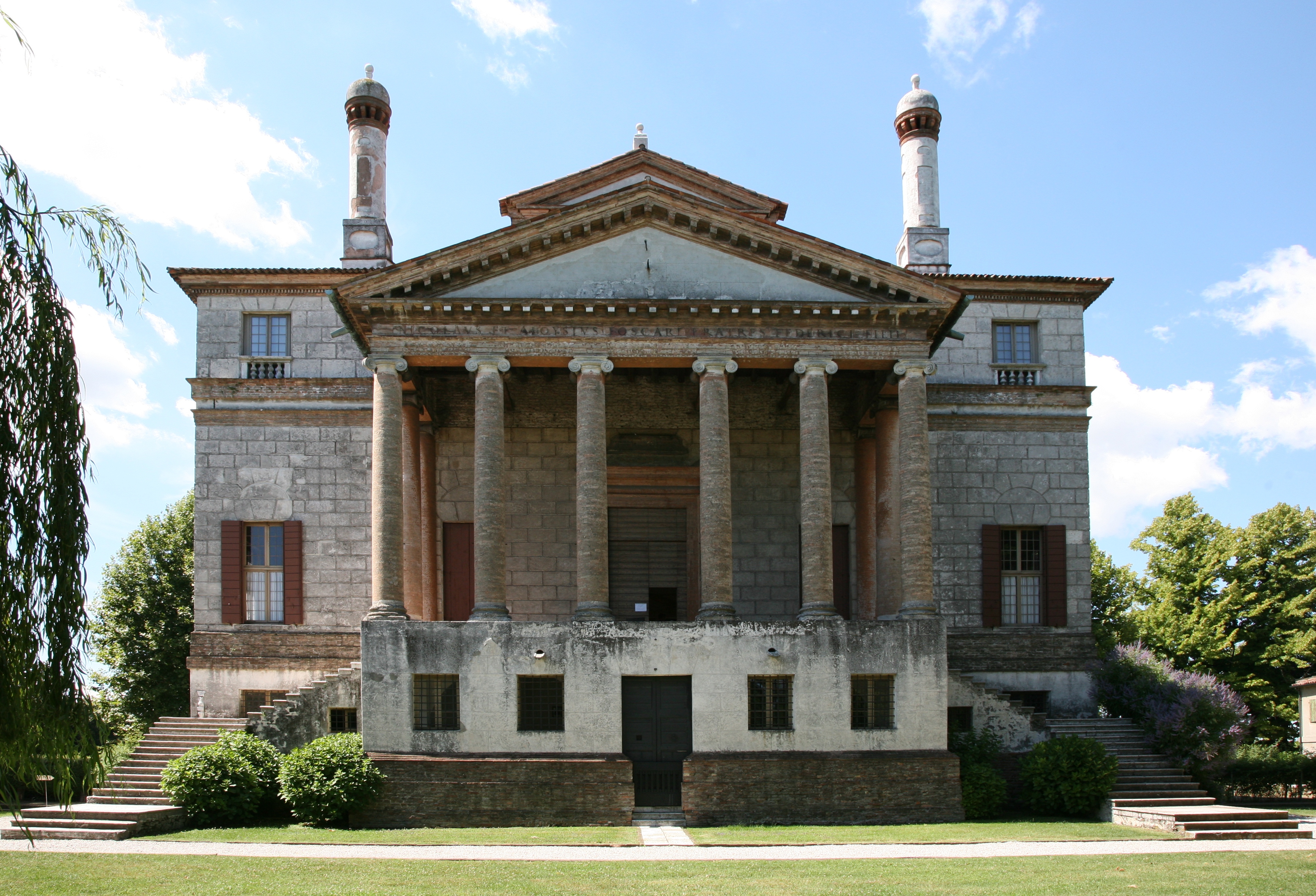
93 (96) rusticated stone
The stones making the wall are bevelled and so appear to have deep channels between them.
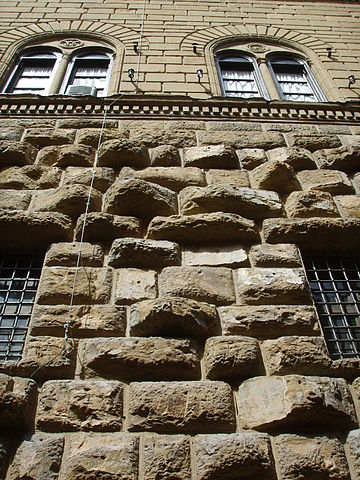
93 (96) piano nobile
(Italian: ‘noble floor’). In architecture, this is the main floor of a Renaissance building, usually on the
storey immediately above the ground floor. The rooms on this level are elegantly decorated.
93 (96) school of Tintoretto
Jacopo Robusti (1518-1594), who was proud of his nickname ‘Tintoretto’ (‘the little dyer’), was a superb
Venetian painter of dramatic effects. He had a vast influence on a set of unoriginal followers.
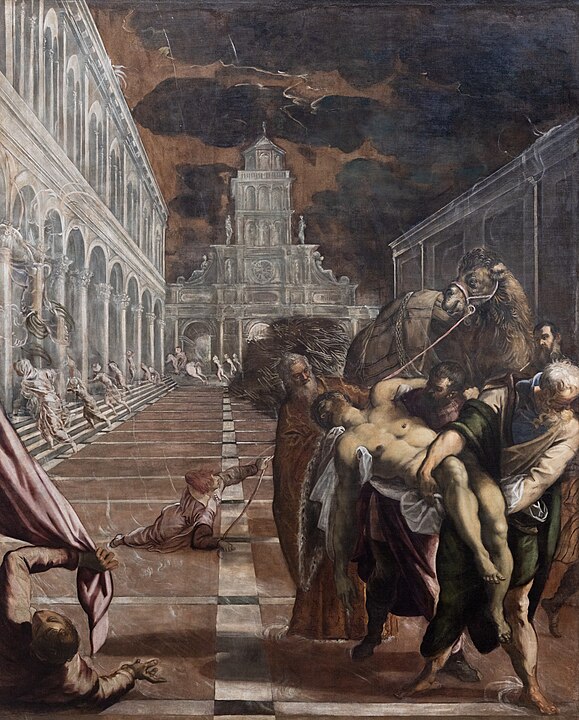
96 marchese[Only in Am. Ed.]
marquess
93 (96) Mostica
mosquitoes. EW seems to have made this mock-Italian word up and given it to the butler to say as a failed
attempt to find the correct English word. Until recently I thought it might be an uncommon dialect word
cognate with the French (moustique), but it appears not to be so. The Italian word for mosquito is
zanzara.
93 (96) bulbous press
A press is a shelved cupboard that is big enough to take bed linen. This one is obviously a free one made by
a skilled cabinet-maker, as he has expended some energy in giving it an individual form. The bulbous quality
usually refers to the legs (or supporters in other kinds of furniture e.g. bed posters). Each of them would
have been turned to create a massive globe or bulb in their design which might then be heavily decorated by
carving. It is conceivable that the whole piece is bulbous : I have seen such furniture in collections.

93 (97) ‘Si, si, subito, signori.’
‘Yes yes, immediately, gentlemen.’
94 ‘Il marchese’ [Only in Br. Ed.]
‘The marquess.’
94 (98) bêtise
‘ridiculous mistake’ (French)
95 (98) Brenta
A river and canal in Veneto, the province surrounding Venice.
95 (98) the Luna
The oldest hotel in Venice, centrally placed in the city.
95 (98) red damask
The walls are covered with a fine patterned fabric. Damask designs generally have a continuous floral or
geometric pattern. Damask fabrics first became popular in Europe during the fifteenth century and were used
for furniture and walls during the 17th and 18th centuries.
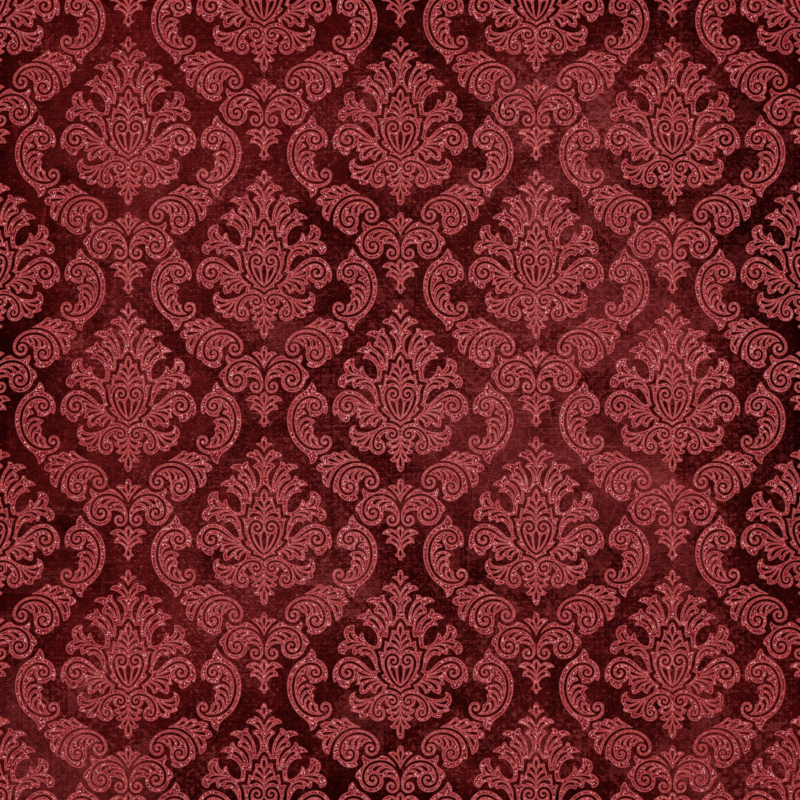
95 (98) gilt gesso
This is a mixture of plaster and glue, often used to prepare a canvas for painting. Here it is used to
create architectural and decorative effects, and is covered with a golden surface.
95 Bellini [Only in Br. Ed.]
As Lord Marchmain explains, the Bellinis were a talented family of painters. Generally considered the
greatest was Giovanni (c. 1430-1516), who brought Venetian painting to the forefront of Renaissance art. He
was the son of Jacopo and brother of Gentile Bellini.
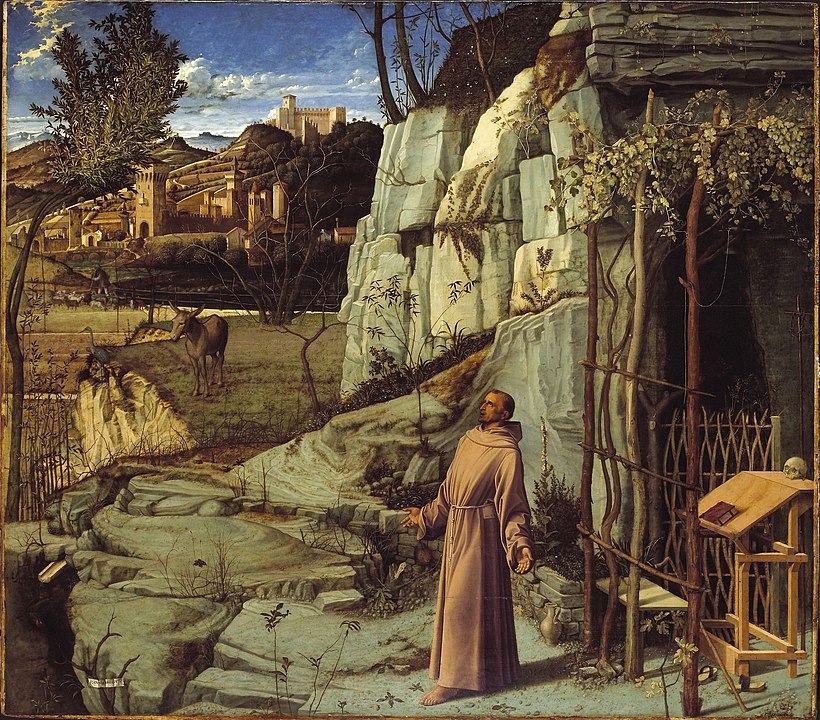
96 (99) a great stumbling-block to my own party
Lord Marchmain is clearly a Conservative; he would call himself a Tory. Since the Conservatives attempted to
maintain the structure of society as it had developed through the ages, any lord who did not take his
responsibilities seriously would do damage not only to the interests of the upper class and the Conservative
party but also to the fabric of society, exposing the Tories to adverse comment and criticism.
96 (99) Florian’s
A famous Venetian café on the Piazza San Marco, open since 1720. The interior now has plush seating and art
nouveau decor.
96 (99) campanile
The famous freestanding bell tower of Saint Mark’s Cathedral in Venice. It had recently been rebuilt
(completed 1912) after collapsing entirely in 1902 with the loss only of the caretaker’s cat.

99 Communists [Only in Am. Ed.]
EW changed this to Anarchists for the 1960 edition. Anarchism was strong in Italy before the advent
of Fascism in 1922, certainly stronger than communism.
96 Anarchists [Only in Br. Ed.]
An anarchist rejects governments and works for their abolition, sometimes violently. Anarchism was strong in
Italy before the advent of Fascism in 1922.
97 (100) Toulouse-Lautrec
The French painter Henri de Toulouse-Lautrec (1864-1901) was famous for his portraits and especially for
those he painted for posters of various nightlife haunts in Paris.

97 (100) odalisque
Technically a woman of the harem, but the term was used in painting for a woman of some sexual allure in a
genre in which the Turkish elements may have been reduced to insignificance.
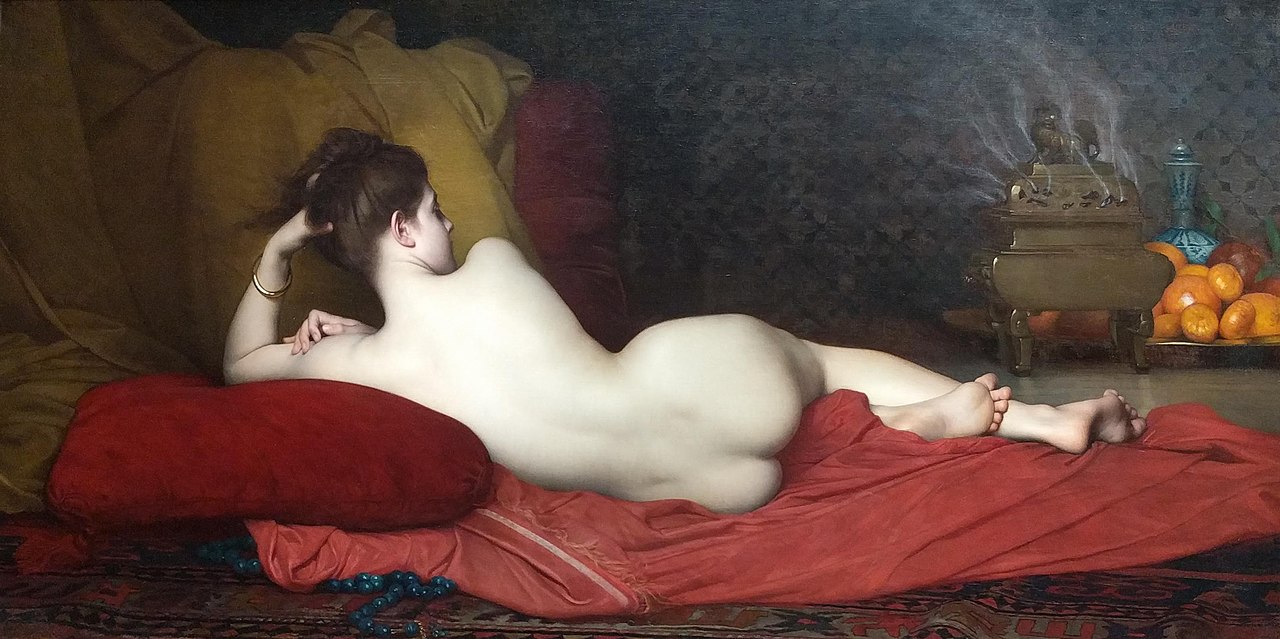
97 (100) ‘little bit of fluff’
This surprisingly vulgar term from EW emphasises the gap between expectation and reality in Charles’s mind.
97 (100) Vittoria Corombona
A name which EW probably picked up from Webster’s The White Devil. This play
was based on a real character in 16th century Italy. As presented in the play, Vittoria is a feisty lady
fighting for her right to self-expression. Though guilty of adultery and murder, in a world of utter
confusion and immorality she is much better than her enemies and tormentors, who present their actions as
the defence of religion and morality.
97 (100) Alex has not once let me inside San Marco even.
This is a telling point : it indicates Lord Marchmain’s strong desire not to give religion a chance. San
Marco (Saint Mark’s ) is the great cathedral of Venice.
98 (101) Chioggia
A seaport at the south end of the Lagoon of Venice. The night was Byronic possibly because Lord Byron once
famously swam the length of the Grand Canal after an evening of drinking; I have no knowledge that he spent
any time fishing for scampi, but in a letter to John Murray from Venice (1st February 1819) he wrote,
Within this last fortnight I have been rather indisposed with a rebellion of stomach, which would retain
nothing, (liver, I suppose,) and an inability, or fantasy, not to be able to eat of any thing with
relish but a kind of Adriatic fish called ‘scampi,’ which happens to be the most indigestible of marine
viands. However, within these last two days, I am better, and very truly yours.
98 (101) prosciutto
An Italian smoked ham served cold and in slices.
98 Harry’s bar [Only in Br. Ed.]
EW has committed an anachronism here, one of only two that I have found. Harry’s Bar just off Saint Mark’s
Square was opened only in 1931. In the first edition of BR he just wrote English bar. The bar,
which was intended originally to be an hotel bar, was opened by Giuseppe Cipriani with money supplied by a
young American called Harry Pickering, hence the name.
98 (101) Colleoni statue
Bartolomeo Colleoni (1400c-1475) was an able mercenary soldier who became general of the Venetian state. The
equestrian statue erected in his memory (1488) was designed by Andrea del Verrocchio (1435c-1488) and made
by Alessandro Leopardi (fl. 1492-1523).
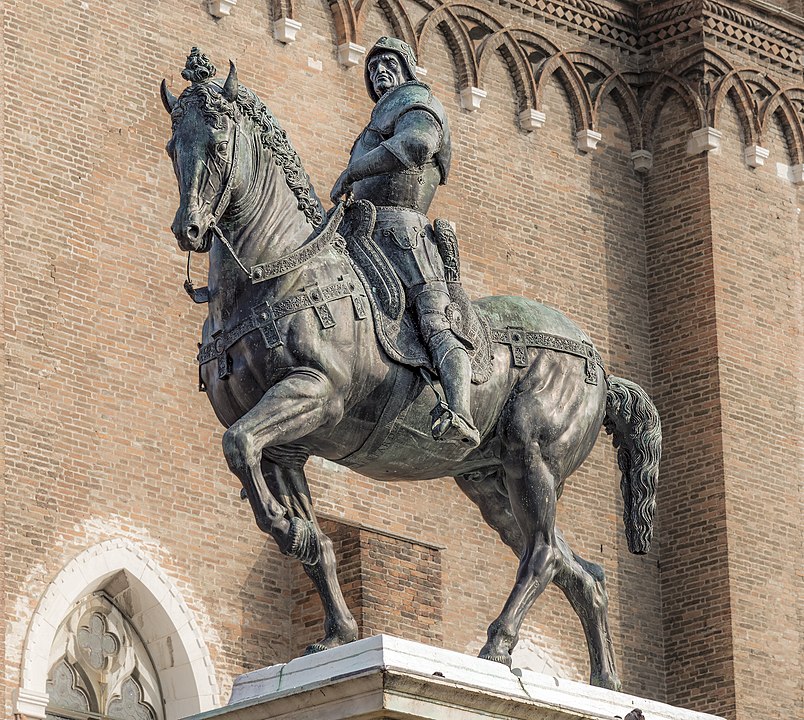
98 (101) you and I can never possibly get involved in a war
Sebastian’s words show how far the youth of the period regretted not being old enough to have fought in
World War I, a yearning EW himself certainly felt. Of course Sebastian’s words are to be contradicted by
events.
98 (101) Grand Canal
Lord Marchmain’s palazzo is superbly placed on the main waterway of Venice.
98 (102) I could not take her amiss
This phrase could mean either that Charles could not fail to understand her implication of a sexual
relationship, or that he could not be offended by her easy frankness.
99 (102) milord
As Cara’s words go on to reveal, this word encapsulates the caricature of the English lord held by many
continentals.
100 (103) Charing Cross
One of the London railway terminuses. It serves the south coast of England and therefore travellers from the
continent of Europe. Charing Cross was the last of a series of memorials erected in 1290 to mark the resting
places of the body of Queen Eleanor, wife of King Edward I, on its way to burial in London. The present
memorial is a later, inaccurate reconstruction. Three others remain at Waltham Cross, Geddington and
Hardingstone.
100 (103) “Marchers”
Sebastian’s slang for Marchmain House, the family’s London home.
104 Hyde Park Gardens [Only in Am. Ed.]
This is a small road lying just behind Bayswater Road on the north side of Hyde Park itself.
100 across the park [Only in Br. Ed.]
We know that Marchmain House is in Saint James’s (page 56), which is the prestigious area between Buckingham
Palace and Whitehall, and that Charles lives in Bayswater (page 64), so the park is almost certainly Hyde
Park, which lies between the two, though Charles might, if he were walking, go through Green Park first. No
doubt the taxi took the route via Piccadilly and Park Lane. We know from the first edition of BR that the
Ryder house is in Hyde Park Gardens, a small road lying just behind Bayswater Road on the north side of Hyde
Park itself.